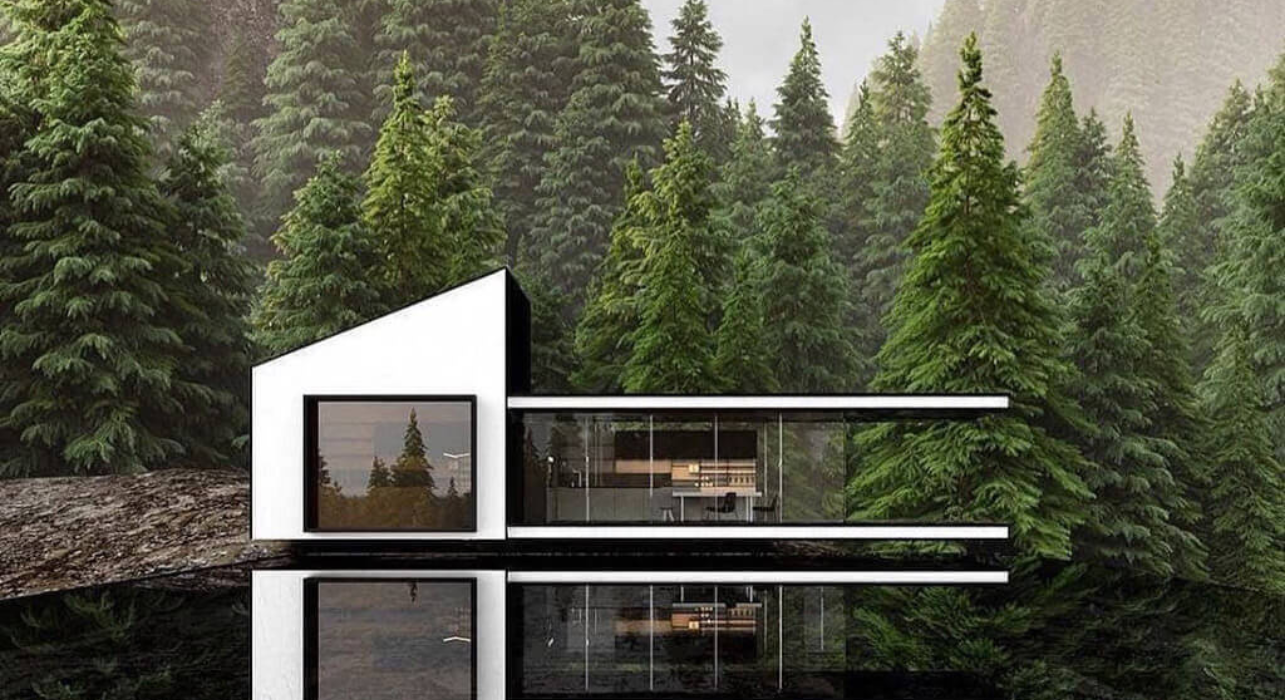Exploring the Benefits of Modern Home Architecture in Contemporary Design
The expedition of modern home design within contemporary layout exposes a sophisticated interplay in between aesthetic allure and functional performance. By prioritizing aspects such as power effectiveness, boosted indoor air top quality, and fluid shifts in between indoor and exterior rooms, modern designs cater to the developing demands of today's homeowners.
Improved Power Efficiency
In contemporary home style, one typically discovers a substantial concentrate on boosted energy performance, which is essential in attending to climbing energy costs and ecological issues. Designers and builders are progressively incorporating cutting-edge layout strategies and advanced innovations to maximize power use in domestic areas. This standard change is driven by an expanding recognition of sustainability and the need to decrease carbon footprints.
Secret features of energy-efficient homes include remarkable insulation, energy-efficient home windows, and the usage of lasting products. These layout components function in tandem to decrease warmth loss in winter and reduce heat gain in summer, guaranteeing a comfortable living atmosphere year-round. Additionally, contemporary homes commonly include renewable resource resources, such as photovoltaic panels, which not just decrease reliance on non-renewable power yet additionally give possible price financial savings for house owners.

Improved Indoor Air High Quality
Prioritizing enhanced interior air high quality has become a trademark of modern home design, as homeowners progressively identify the significance of a healthy and balanced living environment. Contemporary style incorporates advanced products, ventilation systems, and wise modern technology to promote cleaner air within domestic rooms.

Moreover, the layout of modern homes regularly emphasizes natural ventilation, permitting fresh air to circulate and decreasing dependence on fabricated climate control. Tactically positioned home windows, skylights, and vents facilitate air flow, adding to a setting that fights indoor air stagnancy.
Additionally, including biophilic design elements, such as indoor plants, not only improves visual allure yet additionally serves to purify the air. modern home architecture melbourne. Generally, by concentrating on enhanced interior air top quality, modern-day home style not just boosts the convenience and well-being of its occupants yet additionally promotes a sustainable living environment that straightens with modern wellness and health criteria

Seamless Indoor-Outdoor Connection
As contemporary home owners look for to boost their living experiences, the concept of a seamless indoor-outdoor connection has gained considerable traction in contemporary design. This style viewpoint obscures the limits in between indoor areas and the all-natural atmosphere, advertising a harmonious coexistence that enhances life.
Architectural elements such as expansive sliding glass doors, huge home windows, and open flooring strategies promote this connection, enabling areas to flow effortlessly from indoors to outdoors. These features not just develop a feeling of openness but also urge involvement with nature, which can have extensive impacts on mental health.
Furthermore, a smooth indoor-outdoor link improves the performance of living spaces. Outdoor locations can work as extensions why not find out more of the home, accommodating numerous tasks such as dining, entertaining, or leisure. By integrating landscaping and exterior home furnishings that match interior decoration, homeowners can develop inviting environments that satisfy diverse way of lives.
On top of that, this architectural strategy commonly emphasizes sustainability, as natural air flow and passive air conditioning strategies lower reliance on artificial environment control. Ultimately, welcoming a seamless straight from the source indoor-outdoor link promotes a more vivid, dynamic, and health-conscious living experience.
Taking Full Advantage Of Natural Light
All-natural light is an essential component in modern home style, substantially boosting both visual appeal and passenger well-being. The calculated incorporation of big home windows, skylights, and open areas permits natural light to flood insides, creating lively and welcoming atmospheres. This layout approach not just boosts the visual charm of a home yet also promotes a link to the outdoors, promoting a sense of peace and openness.
Moreover, maximizing natural light adds to power efficiency, decreasing dependence on fabricated lighting during the day. Residences made with this principle in mind typically include reflective surface areas and light-colored materials that magnify the results of all-natural light, guaranteeing that areas really feel bright and airy. This not only improves comfort however likewise decreases energy expenses.
Furthermore, direct exposure to natural light has been linked to enhanced mood and performance among occupants. By creating well-lit areas that motivate interaction and activity, contemporary design can substantially impact the quality of life within the home. Ultimately, the thoughtful integration of natural light is a trademark of contemporary design, blending functionality with beauty while fostering a much healthier living setting.
Modification and Adaptability
The focus on maximizing all-natural light in modern-day home design effortlessly matches the concepts of modification and adaptability. This architectural method caters to private preferences, allowing homeowners to customize their living areas to meet their unique demands and way of lives. Customization in layout makes it possible for the combination of personal aesthetic appeals, whether through the option of materials, color schemes, or spatial setups.
Flexibility is an additional cornerstone of modern architectural trends, assisting in adaptive living settings that can progress in time. Open up layout, movable dividers, and multifunctional rooms are crucial features that sustain dynamic living setups. These elements encourage property owners to develop areas that can change for different objectives-- whether for work, recreation, or celebrations-- boosting usability without endangering style.
Additionally, the their website assimilation of smart home innovation additionally intensifies customization. Ultimately, customization and versatility in contemporary home design promote a deeper connection between individuals and their living spaces.
Conclusion
In summary, contemporary home architecture in contemporary design provides many advantages, including enhanced energy efficiency, improved interior air top quality, smooth indoor-outdoor links, taken full advantage of natural light, and enhanced customization options. These elements jointly add to much healthier living atmospheres and promote sustainable techniques, inevitably profiting both property owners and the wider community. The cutting-edge assimilation of appearances and capability within modern architecture not just raises the lifestyle but additionally sustains a more eco mindful future.